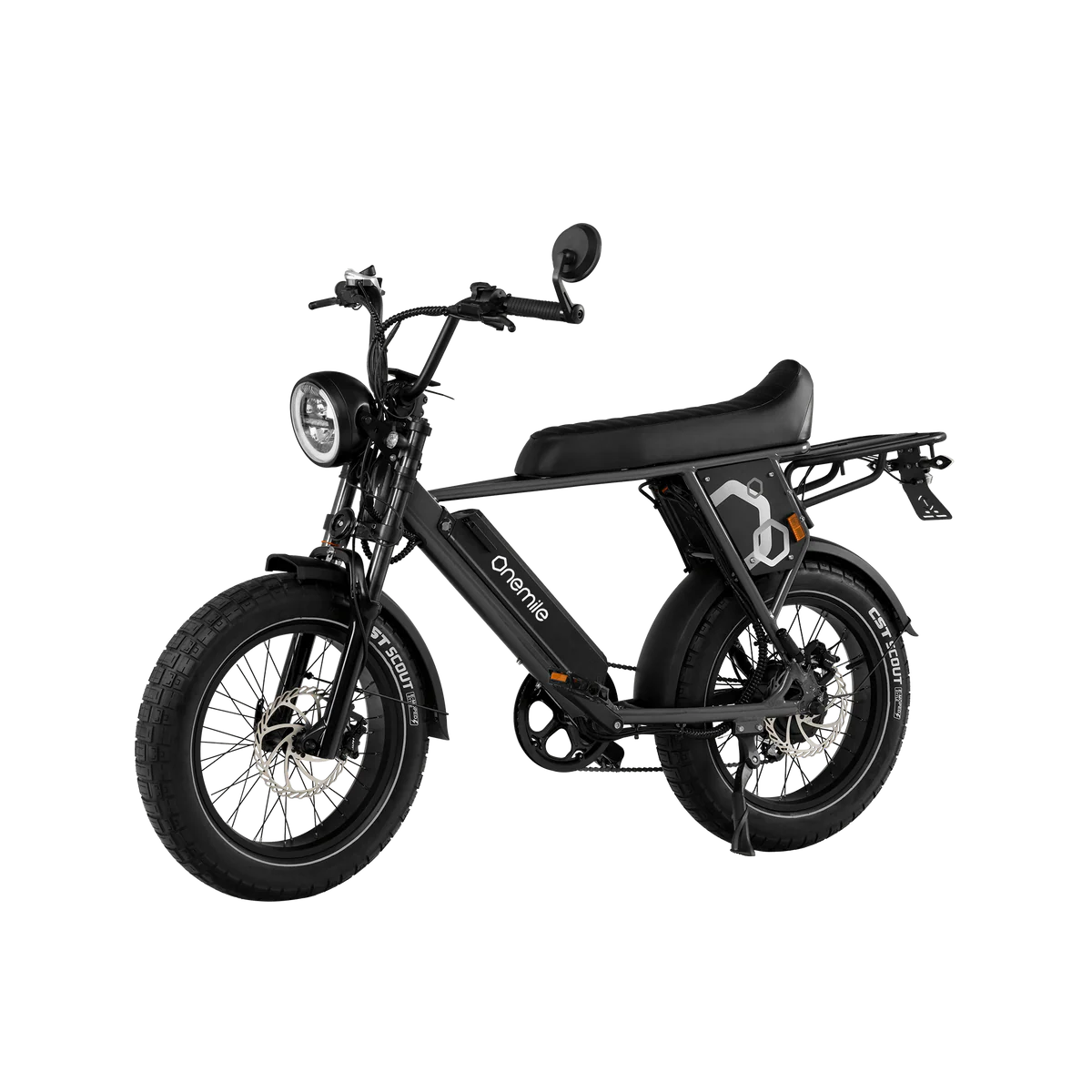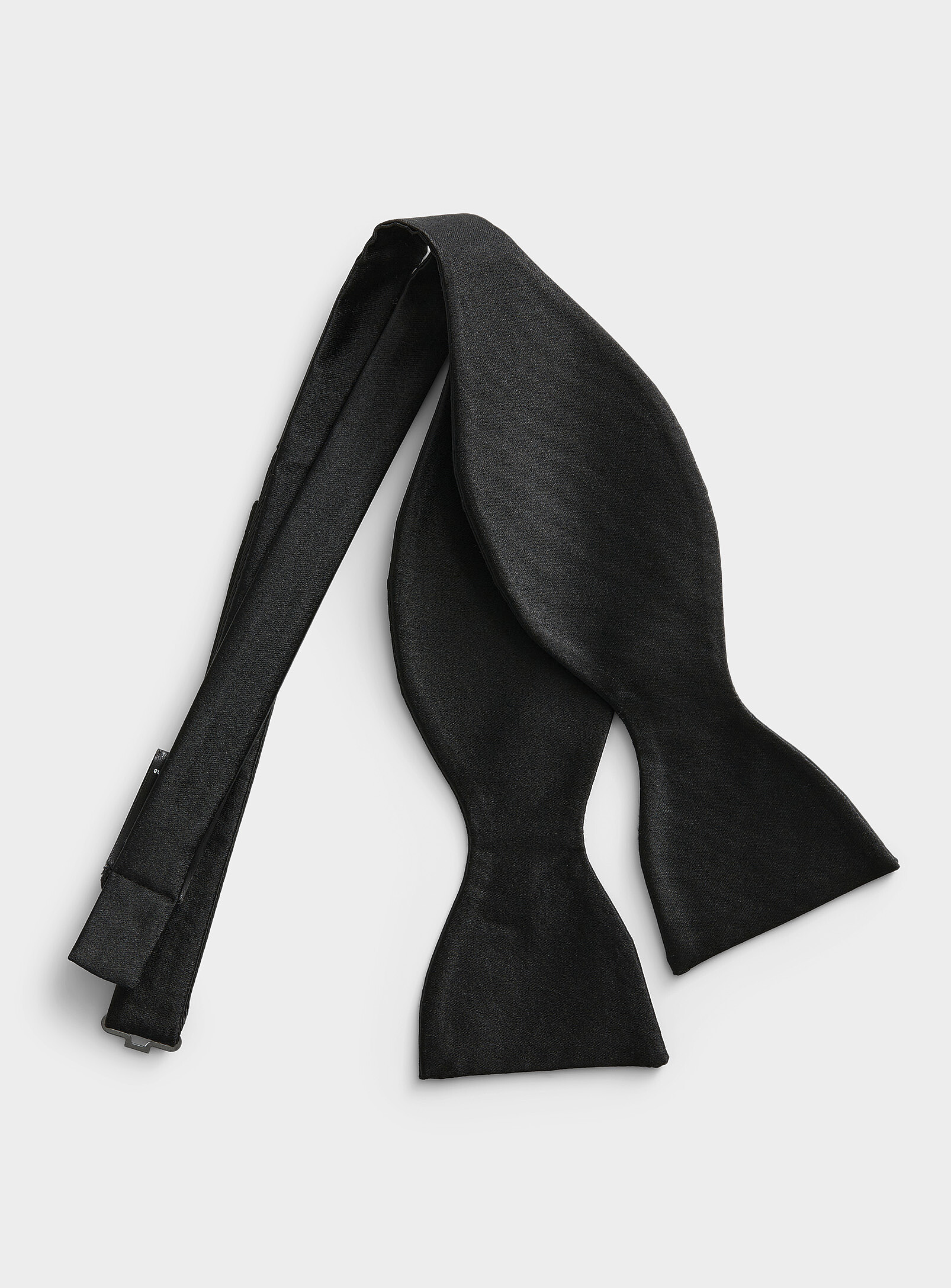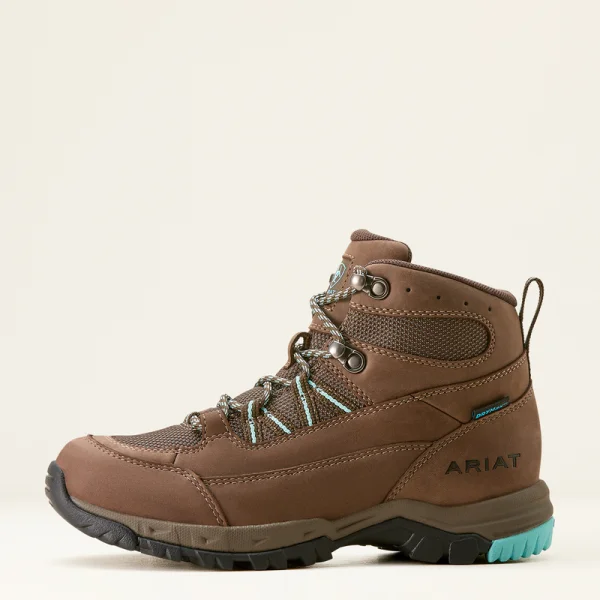Sometimes your commute needs less traffic and more freedom. You want speed without sweat, cargo capacity without a car, and weekend miles that actually feel like fun. In this article, we’ll translate e-bike jargon into real-life decisions you can trust—frame fit, motor types, battery math, braking confidence, and the accessories that make daily riding a breeze. Our goal is a clear, step-by-step path to picking (and loving) a bike from the Onemile E-bikes Collection that fits your body, your routes, and your lifestyle.
Shop Onemile E-bikes Collection
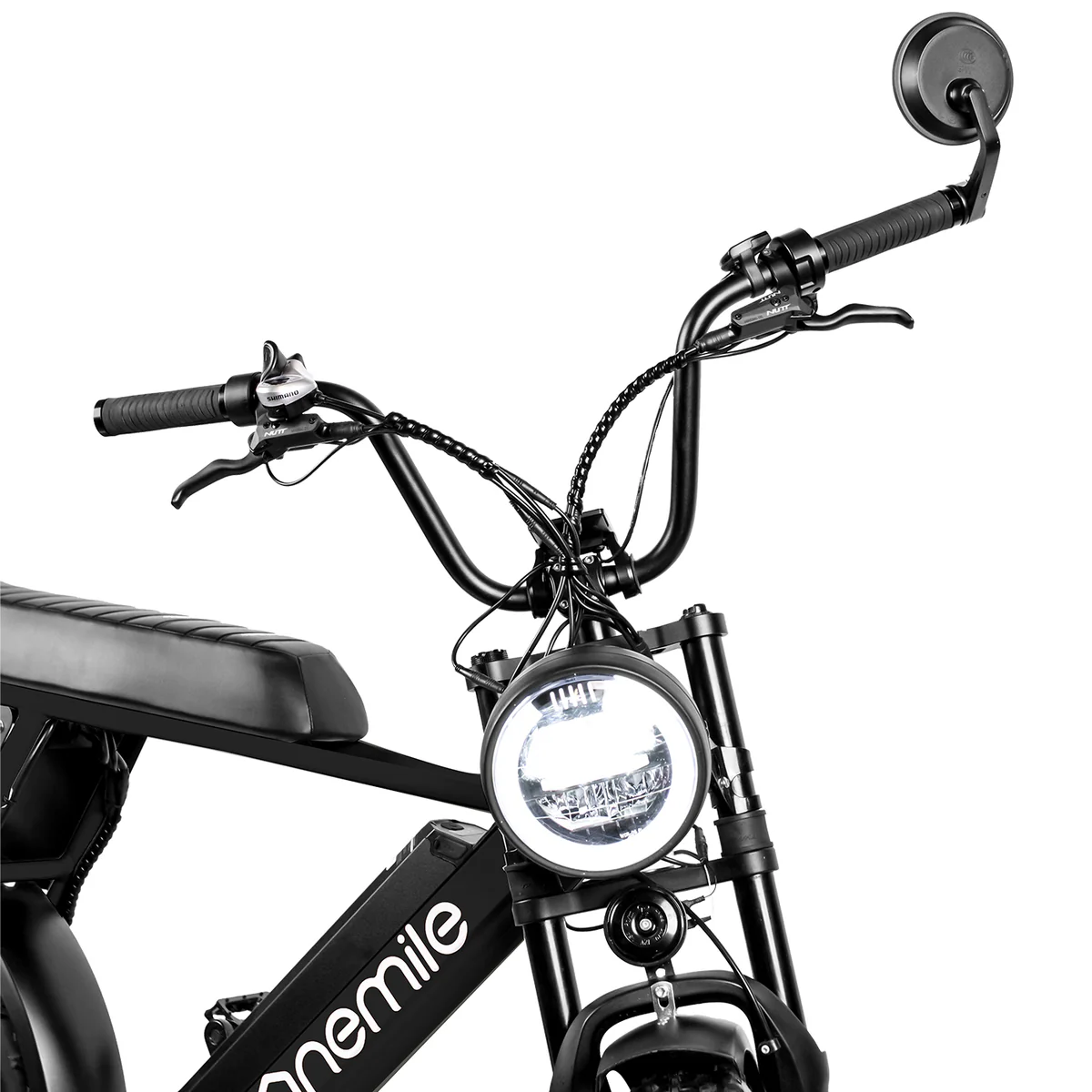
Why an E-Bike Beats Sitting in Traffic (and How to Use It Daily)
An e-bike turns six separate headaches—parking, gas, traffic, schedules, hills, and sweat—into one clean solution. You ride in your city clothes, glide past gridlock, and arrive with enough energy for the actual day. The assist doesn’t replace effort; it multiplies it, so headwinds and hills stop being “reasons not to” and start being “no big deal.” With the Onemile E-bikes Collection, you’ll find commuter-leaning step-throughs, nimble city frames, and utility-minded options that carry your bag, laptop, or groceries without drama.
Fit First: Get the Frame and Touch Points Right
Comfort is performance. If your back, wrists, or knees complain, you won’t ride—no matter how powerful the motor is. Start with standover and reach:
- Standover: You should clear the top tube with a few centimeters to spare when standing flat-footed. Step-through frames make starts/stops effortless and safer in city traffic.
- Reach: From saddle to bars, your arms should be slightly bent with relaxed shoulders. Too long and your neck tightens; too short and handling feels twitchy.
- Saddle height: With the ball of your foot on the pedal at the bottom of the stroke, your knee should have a soft bend.
- Contact points: Swept bars reduce wrist strain; ergonomic grips and a supportive saddle change everything on commute days.
Most bikes in the Onemile E-bikes Collection are designed for easy sizing windows and adjustable cockpits, so you can fine-tune comfort on day one.
Motor: Hub vs. Mid-Drive (and Why It Matters to You)
Two common motor layouts power modern e-bikes:
- Rear Hub Motors: Simple, durable, and budget-friendly. They provide a “push” sensation and excel for flat to rolling city terrain. Great for set-and-forget commuting.
- Mid-Drive Motors: Placed at the crank for a more natural “you-plus” feel, using the bike’s gears for hills. They climb brilliantly and keep weight centralized for balanced handling.
If your commute is mostly flat with a few bridges, a hub motor from the Onemile E-bikes Collection is smooth and efficient. If you face sustained climbs or want the most natural pedaling feel, lean toward a mid-drive option when available.
Shop Onemile E-bikes Collection
Torque Sensors vs. Cadence Sensors: How Assist Feels
Assist control shapes personality:
- Torque Sensor: Measures how hard you’re pushing and matches you—silky, intuitive, and efficient. It feels like bionic legs, not a throttle.
- Cadence Sensor: Detects crank rotation; once you’re pedaling, it adds power at the chosen level. It’s relaxed, slightly on/off, and great for cruising.
Both have fans. If you love a natural, sporty ride, pick torque-sensing models. If you want easygoing assist for errands and scenic rides, a well-tuned cadence system in the Onemile E-bikes Collection is perfect.
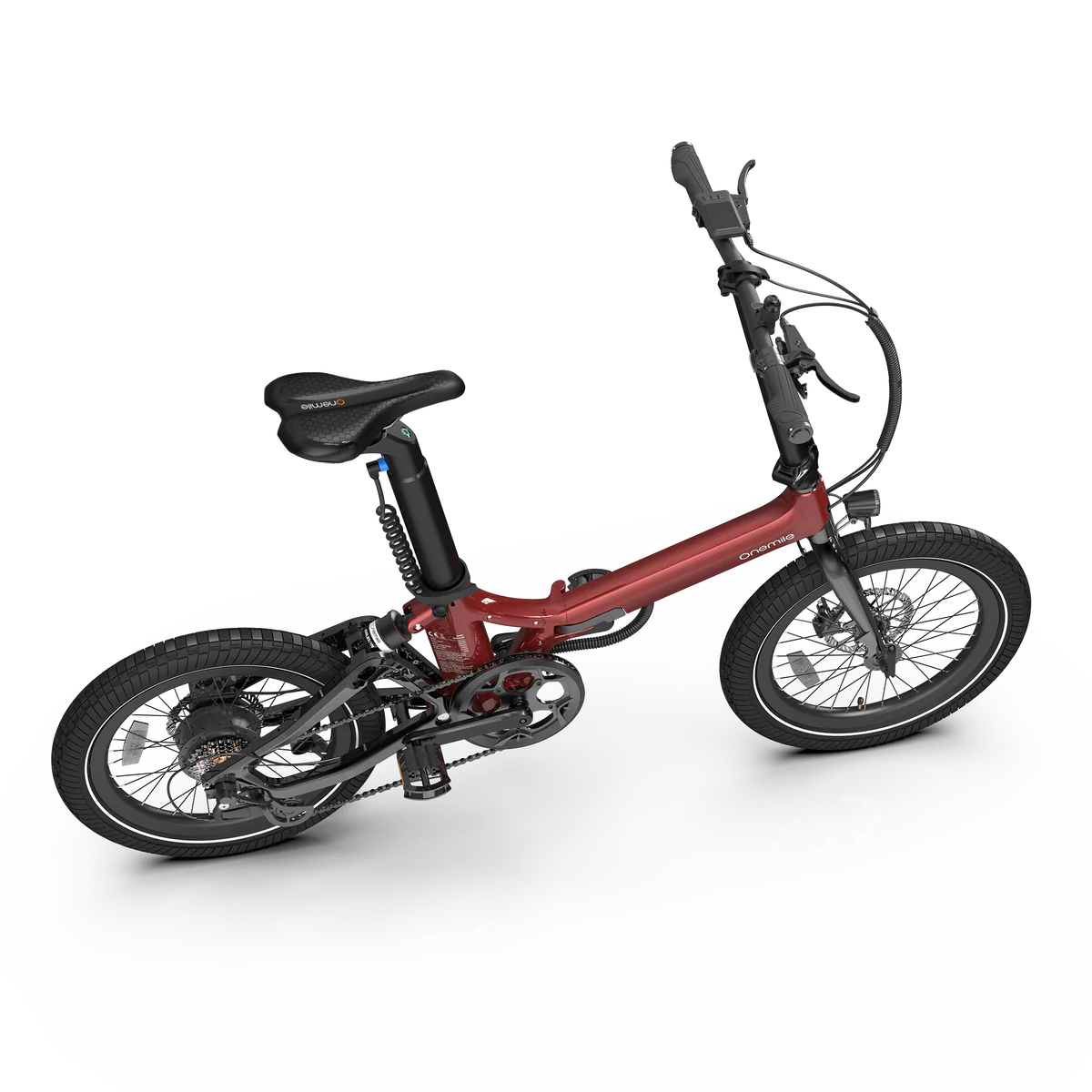
Battery & Range: Honest Math for Real-World Rides
Manufacturers quote range in ideal conditions; cities rarely are. Use this field-tested approach:
- Start with watt-hours (Wh). Multiply voltage × amp-hours (e.g., 36V × 14Ah = 504Wh).
- Estimate consumption. Urban riders typically see 8–14 Wh per km depending on weight, hills, wind, and assist level.
- Do the math. 504Wh ÷ 12 Wh/km ≈ 42 km of realistic mixed riding. Conservative, but reliable.
Range stretches when you: (a) run lower assist, (b) keep tires properly inflated, (c) spin an efficient cadence and shift early on hills, and (d) avoid constant stop-start surges. Swappable or expandable battery options in the Onemile E-bikes Collection let you plan bigger weekends without charger anxiety.
Brakes, Drivetrain, and Tires: Confidence Where It Counts
- Hydraulic Disc Brakes: Strong, predictable stopping in rain or sunshine with light lever effort—ideal for urban traffic.
- Drivetrain: 7–10-speed setups give enough gearing for starts, hills, and a relaxed high-speed cadence. Belt drives (where offered) deliver silent, grease-free commuting with minimal maintenance.
- Tire Width: 40–50 mm city tires soak up cracks and curb cuts; semi-slick tread keeps rolling resistance low while adding grip in wet conditions.
- Fenders, Lights, Racks: Full-coverage fenders keep you dry, integrated lights make you visible, and a rear rack turns your e-bike into a weekday hauler.
These components—thoughtfully specced across the Onemile E-bikes Collection—are what transform “nice ride” into “daily habit.”
Shop Onemile E-bikes Collection
Classes, Modes, and Controls: Know Your Options
Most urban e-bikes offer multiple pedal-assist levels (Eco → Sport) and sometimes a walk-assist for ramps and garages. If your region defines e-bike classes, you’ll typically see:
- Class 1: Pedal assist to ~20 mph (≈25–32 km/h), no throttle.
- Class 2: Pedal assist + throttle, capped ~20 mph.
- Class 3: Pedal assist up to ~28 mph (≈45 km/h), usually without throttle.
Match capability to your routes, local regulations, and comfort level. The Onemile E-bikes Collection makes mode switching easy, so you can cruise Eco on bike paths and bump up to Sport for short, steep grades.
Use-Case Playbook: Commute, Errands, Fitness, Weekends
- Commute: Step-through frame + fenders + lights + panniers. Ride in work clothes, carry a rain shell, and keep a small charger at the office.
- Errands & Groceries: Add a milk-crate-style rear basket or panniers; bungee a lock to your rack. Parking becomes “park anywhere.”
- Fitness & Fun: Lower assist to Eco or Tour to keep your heart rate up while covering more distance than a traditional bike day.
- Weekend Explorers: Wider tires and a suspension seatpost (or front fork where available) soften canal paths and park lanes.
The beauty of the Onemile E-bikes Collection is that a single bike can live all four lives with minor accessory swaps.
Charging, Storage, and Battery Care
- Charge Strategy: Shallow charges (20–80%) are easy on lithium-ion cells; top to 100% before long rides.
- Temperature: Store between 10–25°C when possible; extreme heat/cold accelerates wear.
- Security: Remove or lock the battery when parking outside; use a quality U-lock plus a cable for wheels/seat.
- Cleanliness: Wipe contacts dry after rain; check for grit in the charge port cap.
Good habits keep the Onemile E-bikes Collection ride-ready year-round.
Shop Onemile E-bikes Collection
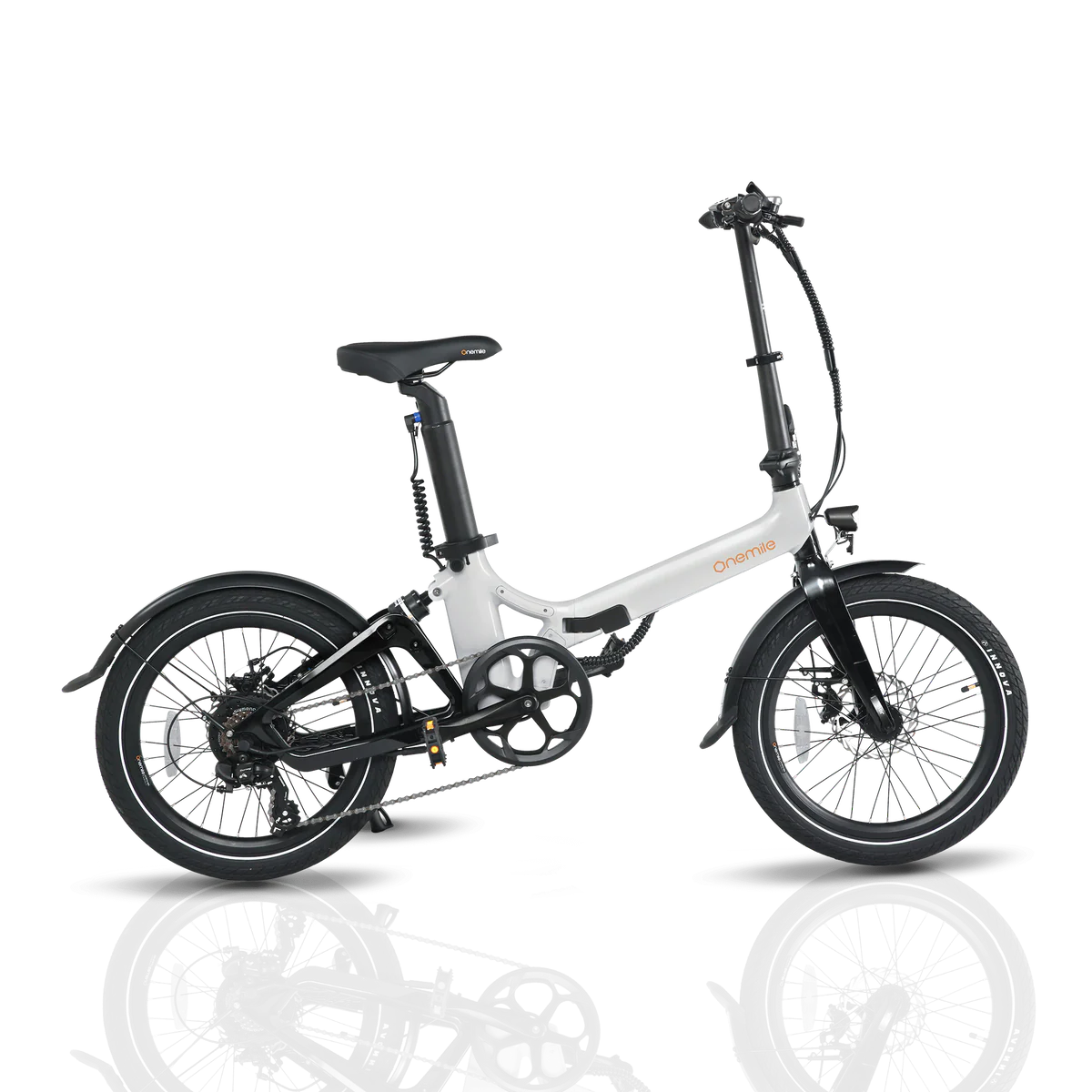
Mid-Article Quick Stack (Bullets + Guidance): Your 60-Second Buy Checklist
- Frame Fit: Step-through for easy mounting; standard diamond for sportier handling.
- Motor Match: Hub for simple city duty; mid-drive for steep hills and “natural” feel.
- Battery Wh: Target 500–700Wh for multi-day commutes or longer weekends; 350–500Wh for short city hops.
- Brakes: Hydraulic discs or bust—especially in wet climates.
- Tires: 40–50 mm with puncture protection for city confidence.
- Essentials: Fenders, lights, rear rack, kickstand, bell.
- Security: U-lock + cable, and battery key/lock strategy.
- Comfort Mods: Ergonomic grips, suspension seatpost, and swept bars if wrists or back are sensitive.
Range Anxiety, Solved: Tactics That Actually Work
- Shift Early: Use gears. Let the motor spin happily; high torque at low cadence drains batteries.
- Smooth Inputs: Hold steady assist instead of full-gas bursts between every stoplight.
- Tire Pressure: Check weekly; under-inflation can cost you 5–10% range.
- Plan B: Keep a spare charger at work or carry a compact one in a pannier for opportunistic top-ups (coffee shop, coworking space).
These habits make the Onemile E-bikes Collection feel limitless, even on ambitious days.
Safety, Visibility, and Street Smarts
- See & Be Seen: Run front and rear lights day and night; reflective accents on panniers boost side visibility.
- Braking Space: E-bikes carry speed—practice controlled stops in an empty lot, progressively loading the front brake while staying centered.
- Urban Flow: Make eye contact with drivers, signal early, and take the lane when necessary to avoid door zones.
- Wet Roads: Increase following distance and feather brakes before turns.
A few sessions dialing in control will make your new Onemile E-bikes Collection ride feel second nature.
Shop Onemile E-bikes Collection
Maintenance: Minimal, Predictable, Totally Doable
- Weekly (2–5 minutes): Check tire pressure, test lights, spin wheels to spot wobbles, squeeze brake levers.
- Monthly: Lube chain (or wipe belt), inspect pads and rotors, check bolt torque on stem/seatpost.
- Quarterly: True wheels if needed, update display/controller firmware (if applicable), and inspect cabling/housing for wear.
- Annually: Shop tune for drivetrain wear, brake bleed (hydraulic), and a full bolt check.
City riding is tough on components, but a simple routine keeps any bike in the Onemile E-bikes Collection feeling box-fresh.
Accessory Ecosystem: The Small Things That Change Everything
- Cargo: Panniers for laptops and groceries; a front rack for quick-grab items.
- Comfort: Suspension seatpost, ergonomic grips, and a slightly wider saddle for upright geometry.
- Security: Frame-mounted U-lock holster and a discreet GPS tracker if available in your region.
- Utility: Phone mount for nav, compact pump, multitool, and spare tube/plug kit.
Accessorize once and your weekday logistics go from “Where do I put this?” to “Already handled.”
Real-World Scenarios (Pick Your Persona)
- The 9-to-5 Commuter: 10–20 km round-trip, mixed paths and streets. Hub motor, 500Wh battery, fenders, integrated lights, rear rack + panniers.
- The Hill-Climber: Short but steep route, maybe cobbles. Mid-drive, torque sensor, 500–700Wh battery, hydraulic discs, 10-speed drivetrain.
- The Utility Ace: School run + groceries. Step-through frame, front crate, rear panniers, kickstand with wide stance.
- The Weekend Roamer: Park lanes and canal paths. Wider tires, suspension post, phone mount, and a spare charger in the bag.
The Onemile E-bikes Collection covers all four without pushing you into something you don’t need.
Troubleshooting: Quick Fixes to Keep You Rolling
- Squeaky Brakes: Clean rotors with isopropyl, bed pads in with a few strong stops.
- Ghost Pedal Assist: Lower assist one level and check magnet/sensor alignment near the crank.
- Chain Skipping: Index gears (barrel adjuster quarter-turns) or check chain wear.
- Rattles: Tighten rack/fender bolts; add rubber washers where metal meets metal.
Tiny tweaks = silent rides.
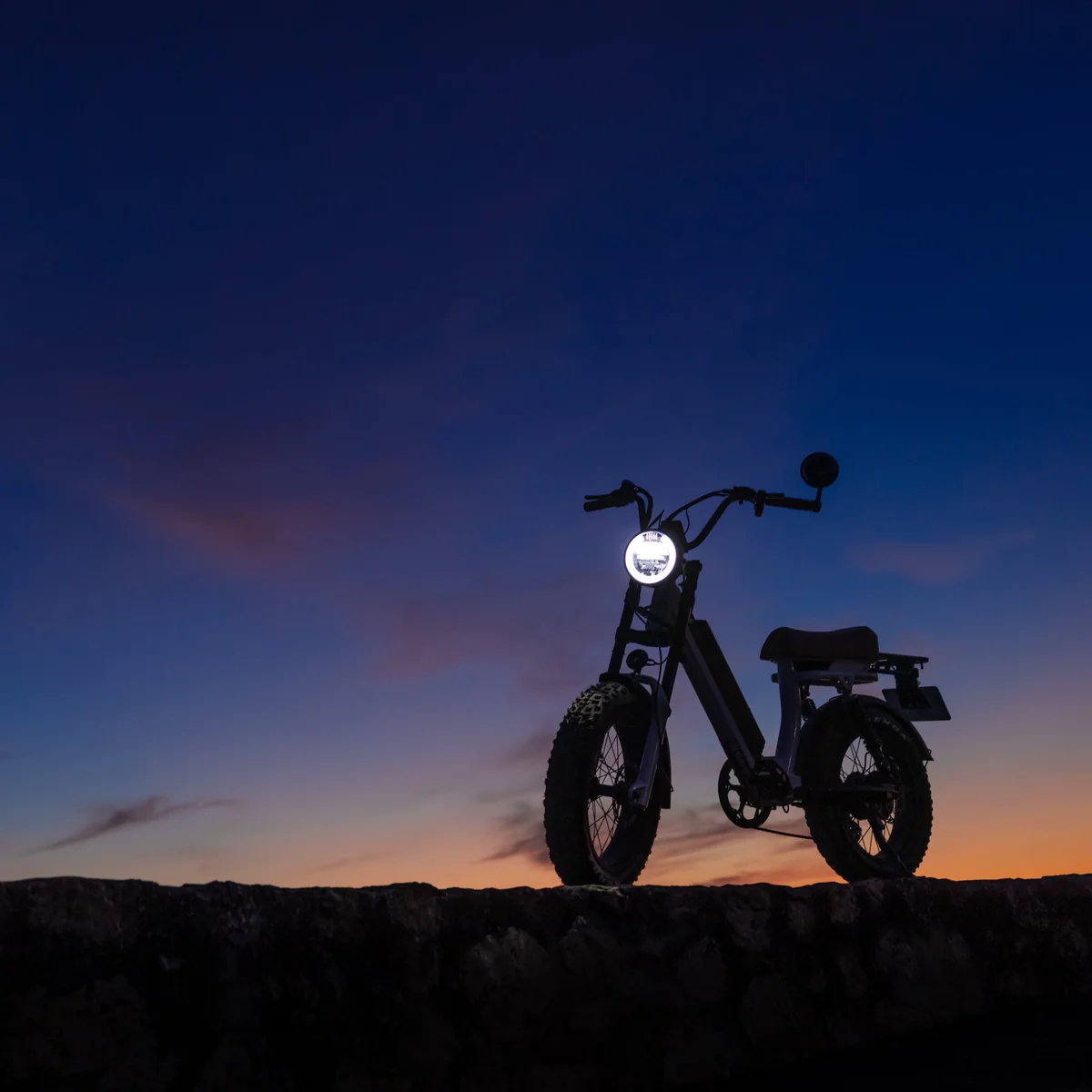
Conclusion
The best e-bike isn’t the most expensive—it’s the most appropriate. Start with fit and comfort, then pick a motor that matches your terrain, a battery that fits your distance, and brakes and tires that inspire confidence in all weather. Add fenders, lights, and a rack to turn weekday rides into a seamless habit, then round out your setup with small accessories that make every trip smoother. When you assemble those pieces intentionally, a bike from the Onemile E-bikes Collection becomes more than transportation; it’s your daily freedom machine—reliable, comfortable, and quietly fast.
Shop Onemile E-bikes Collection
FAQ
- How do I choose between a step-through and a standard frame?
Step-throughs make starts/stops simpler in traffic and are great for riders who prioritize comfort or carry cargo. Standard frames feel slightly sportier and can be lighter. Pick what matches your riding style and flexibility. - What battery size should I get?
For city commutes up to ~30–40 km round-trip with moderate assist, 400–500Wh is a sweet spot. For hills, heavier riders, or longer weekends, look to 500–700Wh. - Can I ride in the rain?
Yes—most modern e-bikes use water-resistant housings. Wipe the bike down after wet rides, dry the contacts, and keep the chain/belt clean. - How often does an e-bike need maintenance?
Think minutes, not hours: weekly pressure and safety checks, monthly chain lube/inspection, and a quarterly look at pads/rotors and bolts. An annual tune keeps everything dialed. - What’s the difference between torque and cadence sensors?
Torque sensors match your effort for a natural, efficient feel. Cadence sensors add power when they detect pedaling, great for relaxed cruising. Both work—choose the ride feel you prefer. - How accurate are range claims?
They’re best-case. Use watt-hours divided by 8–14 Wh/km for a realistic estimate, and remember that wind, hills, rider weight, and assist level shift the result. - Are hydraulic brakes worth it?
Absolutely. They offer stronger, more consistent stopping with less hand effort, which matters in urban traffic and wet weather. - What accessories should I buy first?
Fenders, integrated lights, and a rear rack are game-changers. Add panniers for carry, a good lock for security, and ergonomic grips or a suspension seatpost for comfort.


